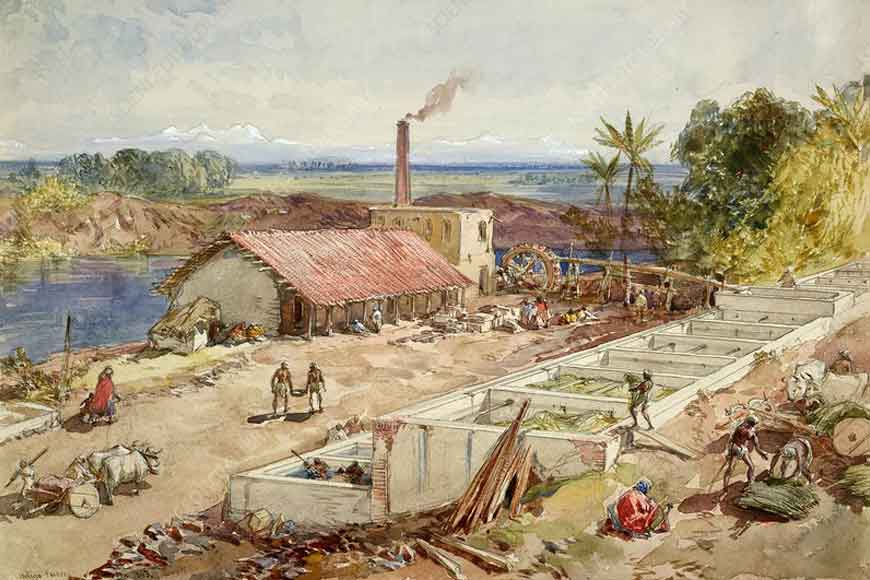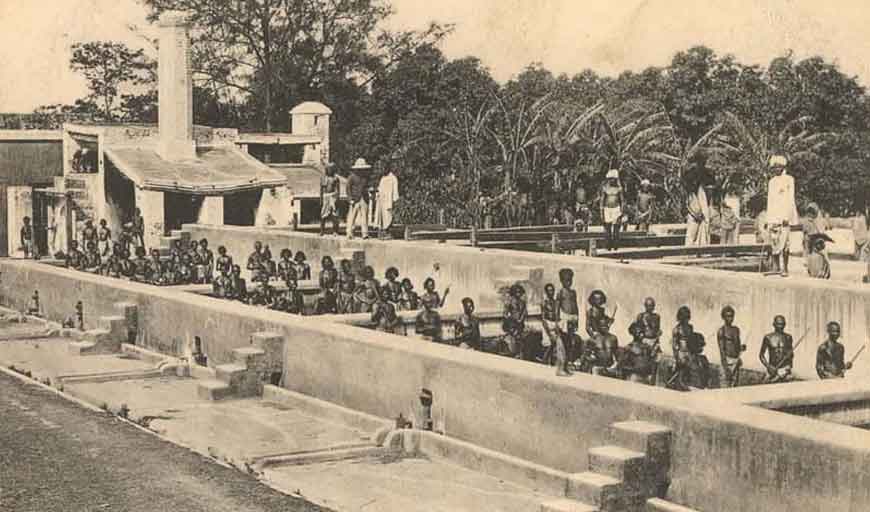Bengal paved the way for the first Peasant Revolution in India

At a time when India is going through multiple farmer uprisings, chartering demands for their rights, one is often reminded that Bengal is not new to peasant uprising. And the protests and revolt was so intense during colonial era, that farmers of this land even forced the British to pass new Act and paved the way for the first peasant revolution in India.
Indigo planting in Bengal dated back to 1777 when Louis Bonnard, a Frenchman introduced it to the Indians. He was the first indigo planter of Bengal. He started cultivation at Taldanga and Goalpara near Chandannagar in Hooghly. Under the Nawabs of Bengal., indigo planting became more and more commercially profitable because of the demand for blue dye in Europe. It was introduced in large parts of Burdwan, Bankura, Birbhum and North 24 Parganas. The indigo planters persuaded the peasants to plant indigo instead of food crops. They provided loans, called dadon, at a very high interest. Once a farmer took such loans he remained in debt for his whole life before passing it to his next generation. The price paid by the planters was meagre, only 2.5% of the market price. The farmers could make no profit growing indigo. The farmers were totally unprotected from the indigo planters, who resorted to mortgages or destruction of their property if they were unwilling to obey them. Government rules favoured the planters. Even local zamindars sided with the planters for their own vested interests. Under this severe oppression, the farmers resorted to revolt.

Indigo planting in Bengal dated back to 1777 when Louis Bonnard, a Frenchman introduced it to the Indians. He was the first indigo planter of Bengal. He started cultivation at Taldanga and Goalpara near Chandannagar in Hooghly. Under the Nawabs of Bengal., indigo planting became more and more commercially profitable because of the demand for blue dye in Europe.
The Bengali middle class supported the peasants wholeheartedly and stood by the peasants. Bengali intellectual Harishchandra Mukherjee described the plight of the poor farmers in his newspaper The Hindu Patriot, while Dinabandhu Mitra depicted the situation in his play Nil Darpan that created a huge controversy and was later banned by the East India Company to control farmer agitation. The revolt started from the villages of Gobindapur and Chaugacha of Nadia, where Bishnucharan and Digambar Biswas first led the rebellion against the planters in Bengal in 1859. It spread rapidly to Murshidabad, Birbhum, Burdwan, Pabna, Khulna, and Narail. Some indigo planters were given a public trial and executed. The indigo depots were burned down. Many planters fled to avoid being caught. The zamindars were also targets of the rebellious peasants.
The revolt started from the villages of Gobindapur and Chaugacha of Nadia, where Bishnucharan and Digambar Biswas first led the rebellion against the planters in Bengal in 1859. It spread rapidly to Murshidabad, Birbhum, Burdwan, Pabna, Khulna, and Narail. Some indigo planters were given a public trial and executed.
But the peasant revolt was ruthlessly suppressed by the British. Large forces of police and military, backed by the British Government and the zamindars, mercilessly slaughtered a number of peasants. They hanged revolution leaders like Biswanath Sardar. The Biswas brothers of Nadia, Kader Molla of Pabna, and Rafique Mondal of Malda were popular leaders. Historian Jogesh Chandra Bagal describes the revolt as the first non-violent Farmer Revolt of India. R.C. Majumdar in ‘History of Bengal’ goes so far as to call it a forerunner of the non-violent passive resistance later successfully adopted by Mahatma Gandhi. The revolt had a strong effect on the government, which immediately appointed the ‘Indigo Commission’ in 1860. In the commission report, E. W. L. Tower noted that ‘not a chest of Indigo reached England without being stained with human blood.’ Finally, the Indigo Act was put in place in 1862 to put an end to the repressions of indigo planters making Bengal the first state to pave the way for the first peasant revolution in India.










